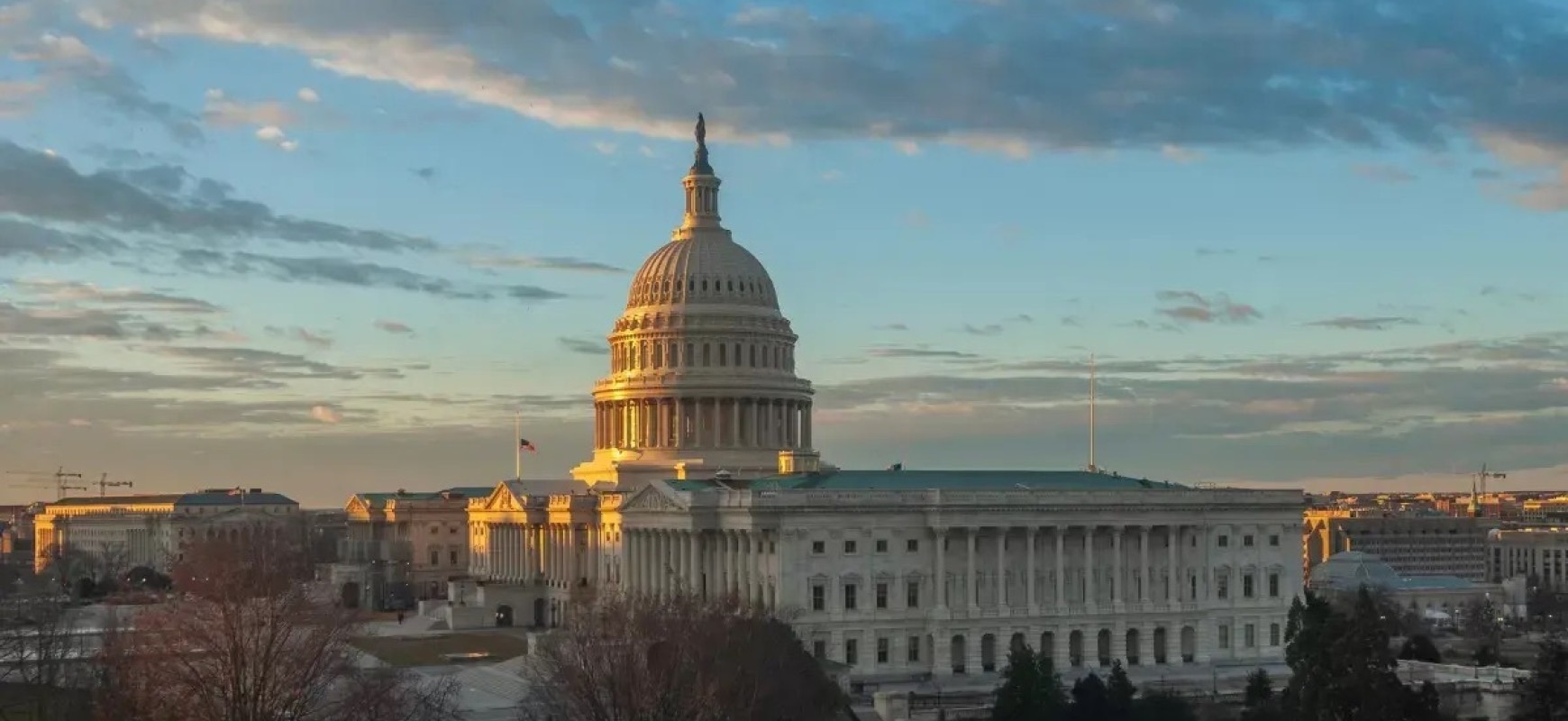Good News on Inflation Overshadowed by Debt Ceiling Concerns
By Contributing Author / June 09, 2023

Late last month, the stock market moved from complacency to fervor around the debt ceiling situation – reports that the parties were getting closer to an agreement sent stocks higher. I was skeptical because there seemed to be such a significant gap between the Biden administration’s position and House Republicans’ position. Yes, Democrats and Republicans had agreed to a clawback of COVID-related stimulus that has not been spent yet. And yes, the Democrats had eased their position on work requirements for welfare-related benefits, saying they were open to some requirements. But that was the easy part. The far bigger issue is discretionary spending cuts, where the chasm between Democrats and Republicans is wide.
Both parties agreed to ringfence Social Security and Medicare with no cuts or even caps applied, and only focus on other types of discretionary spending. The Republicans’ bill, passed in April, would reduce discretionary spending to fiscal year (FY) 2022 levels and limit the growth of future spending to 1% annually over the next 10 years. The White House has proposed keeping spending at FY2023 levels into FY2024, but they want the defense discretionary spending to share in some of those cuts. And so my skepticism comes from the wide gap in bargaining positions: Republicans want 10 years of cuts on discretionary spending while Democrats want two years of caps.
And so it is no surprise to me that, in the last several days as the tough decisions on spending get hammered out, the negotiating parties have gotten more pessimistic. It’s just more realistic, in my opinion. And it suggests to me that we’ll see more market turbulence in the coming days.
So where do we go from here?
Three Scenarios for Resolving the Debt Ceiling Debate
Compromise. The most likely scenario is that the two parties arrive at a compromise. That probably wouldn’t happen until the 11th hour, as we have seen in past debt ceiling negotiations. And it will not be easy. In order to meet the X-date deadline, Speaker Kevin McCarthy says a negotiated draft bill must be received by the House Rules Committee by Wednesday the 24th, as it will not be able to receive a vote for 72 hours. After a Saturday vote, the Senate would then have four days to process the bill by regular order. There is a path in the which Senate can process the bill in a condensed timeframe, but that is a narrow strategy and less reliable.
One of the concessions McCarthy made in order to win enough votes to be elected Speaker of the House was restoring the ability for any single member to call for a “no confidence” vote on him. Such a vote would be unlikely to ever unseat McCarthy, but it injects one more possible headache into the negotiating process because there is no cooling off period after a “motion to vacate” vote, so another one can be called the following day, and so on. Suffice it to say it would be very disruptive.
Discharge petition. A second possible scenario is that Democrats utilize a discharge petition to raise the debt ceiling. This is not a layup, however. A discharge petition is a parliamentary procedure to bring a bill out of committee and to the floor for a vote without the committee’s approval to do so. This forces the House to take action on a bill even if the Speaker or the committee it originates from objects. On May 17, House Democratic leadership filed a discharge petition to move a bill for a clean debt ceiling increase out of committee, and 210 Democratic House members signed it. However, Democrats need 218 signatures to force a vote on the floor, which would require some Republicans to sign the petition — and thus far all Republican members of Congress have remained aligned with Speaker McCarthy. And even if Democrats could force a vote, the earliest date that could occur would be June 12 – almost two weeks after the estimated X-date.
The 14th Amendment. The third possible scenario is that the Biden administration invokes the 14th Amendment — an option they’ve been reluctant to use. The 14th Amendment of the US Constitution states that “the validity of the public debt of the United States, authorized by law…shall not be questioned,” which is widely interpreted to require the US government to meet its financial obligations. The idea here is that the White House and Treasury could decide to keep issuing debt in order to honor past obligations, no matter what happens with the debt ceiling. However, the US Constitution also allocates budgetary power to Congress, not the Executive Branch. Thus, using the 14th Amendment to keep issuing debt would certainly face a legal challenge from Republicans and could get caught in the courts for years. And so it seems the Biden administration is not interested in utilizing this to resolve the debt crisis unless the US arrives at the X-date without the debt ceiling being raised. Another interpretation of the 14th Amendment is that it rules out default, and since it’s part of the Constitution, it stands above the budget law — and this together with the need to maintain financial stability means that the Treasury would have to prioritize debt payments.
News Around the World
While the US debt ceiling debate has captivated market observers, there have been plenty of notable developments around the world:
- China. April economic data for China came in below expectations. For example, China retail sales rose 18.4% year over year, which was well below consensus.¹ And Manufacturing-related activity has been disappointing, although that is likely a reflection of the global economic slowdown. It seems that the Chinese economy is continuing to experience significant growth in services activity, but it is not generally as strong as expected. I continue to believe the China re-opening has very long legs – it’s just taking a breather.
- Canada. Canada’s Consumer Price Index (CPI) print for April was higher than expected, and modestly higher than March. While it’s moving in the wrong direction, some of that increase can be attributed to the Bank of Canada’s rate hikes, which have driven up mortgage rates and increased the cost of shelter. More importantly, I continue to believe one print does not change the narrative. Canada is in a disinflationary trend; however, it is imperfect and lumpy. I don’t think it should force the Bank of Canada to abandon its conditional pause.
- Japan. Japan also saw significant inflation in its most recent CPI print. The good news is that Japan is also experiencing strong growth, as first-quarter gross domestic product came in well above expectations. It does beg the question of when the Bank of Japan will get less dovish.
Looking Ahead
In terms of investment implications, we are getting conflicting reactions from the stock and bond market. The bond market is pricing in the risk of a technical default, with yields on T-bills maturing in early June rising dramatically. However, the stock market seems far more optimistic, and is not pricing in that risk; even the VIX is relatively low. My read is that the bond market usually errs on the side of greater pessimism while the stock market is often irrepressibly optimistic.
I think the bond market is the more accurate measure of risk right now, and that a brief technical default is a real possibility. Stock markets are likely to reflect that greater risk as we get closer to the X-date without an agreement in place. I just believe a technical default would likely be very brief, as it would provide the impetus for the parties to finally reach an agreement and end the standoff.
And so I have to say that I’m looking forward to reaching mid-June, a time when I feel confident that the debt ceiling impasse should be behind us, one way or another. Perhaps we should think of this spring’s debt ceiling crisis as just a financial form of allergy season: It’s going to get worse before it gets better, and we just need to ride it out until pollen counts go down and we can get back to normalcy. I think we’ll all be able to exhale by mid-June, although it will likely be an increasingly volatile market environment between now and then.
Once that drama recedes, I think all eyes will be back on central banks. I’m optimistic that the US Federal Reserve and the Bank of Canada will maintain conditional pauses, and that other Western developed central banks will draw closer to the end of their respective tightening cycles. I think markets will soon begin to discount an economic recovery, even though sentiment is very pessimistic right now.
With contributions from Jennifer Flitton
Research/Outlook Disclosure
This information does not serve, either directly or indirectly, as legal, financial or tax advice and you should always consult a qualified professional legal, financial and/or tax advisor when making decisions related to your individual tax situation.
Arcwood Financial LLC, INVESCO, Money Intelligence, Group IRA and other investment providers or other associated service providers or subcontractors within the ONE Future Platform are independent companies. Realty ONE Group assists Arcwood Financial in monitoring service providers and helping distribute educational resources to agents as a subcontractor but is not a plan sponsor, PPP, plan administrator nor a named responsible plan fiduciary.
This document was produced by, and the opinions expressed are those of INVESCO as of the date of writing and are subject to change. This research is based on their proprietary research and analysis of global markets and investing. The information and/or analysis contained in this material have been compiled or arrived at from sources believed to be reliable, however, Arcwood Financial does not make any representation as their accuracy or completeness and does not accept liability for any loss arising from the use hereof. Some internally generated information may be considered theoretical in nature and is subject to inherent limitations associated therein. The reader should not assume that any investments in sectors and markets identified or described were or will be profitable. Investing entails risks, including possible loss of principal. The use of tools cannot guarantee performance. Past performance is no guarantee of future results. The information in this material may contain projections or other forward-looking statements regarding future events, targets or expectations, and is only current as of the date indicated. There is no assurance that such events or targets will be achieved and may be significantly different than that shown here. The information in this material, including statements concerning financial market trends, is based on current market conditions, which will fluctuate and may be superseded by subsequent market events or for other reasons.
Past performance is not a guarantee of future results.
This does not constitute a recommendation of any investment strategy or product for a particular investor. Investors should consult a financial professional before making any investment decisions.
All investing involves risk, including the risk of loss.
Realty ONE Group offers Real Estate Professionals the best in real estate technology, tools, support and training. Learn more about joining the ONE Family here, or if you're ready to start your own brokerage with your very own Realty ONE Group franchise, get more info here!.



